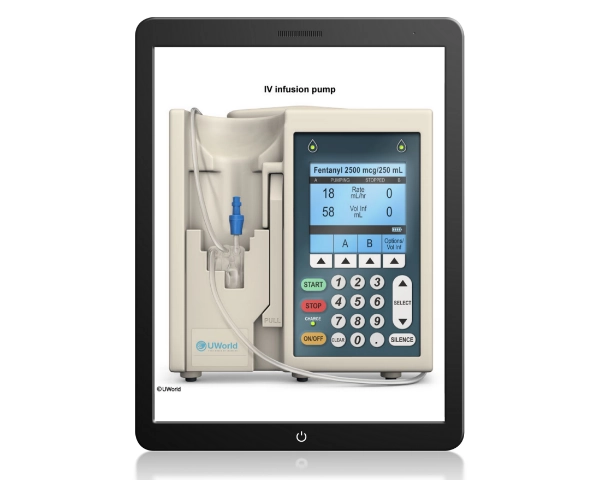
Introduction to the Rounding ML in an OZ Naplex 30
Pharmacy calculations may be mastered, but to some point, it feels daunting, especially when one is about to prepare for the Rounding ML in an OZ Naplex 30 exam. One of the most important and, actually, puzzling skills among the candidates is how to round milliliters in ounces, ML in OZ. Be it guessing math or staring at the conversion charts in outright confusion, you are not alone. Understanding how to correctly round ML in a Naplex 30 OZ will give you more confidence to whet your skills, and these are important features that any aspiring pharmacist should have.
This guide should help take away some of the mystery surrounding this critical calculation and leave you with pragmatic approaches to successfully navigate it on test day. Whether you’re an advanced student or just starting to get your feet wet in pharmacy practice, mastery over this concept will be a game-changer. Let’s dive deep into all you need to know about the rounding ML in an OZ for the Naplex!
Understanding the ML in an OZ Calculation
Understanding Rounding ML in an OZ Naplex 30 calculation is crucial for pharmacy students preparing for the Naplex. The measurement of milliliters (ML) and ounces (OZ) often comes into play during medication dosing.
One ounce equals approximately 29.57 milliliters. This conversion factor is essential when you’re tasked with calculating doses or mixing medications accurately.
Knowing how to convert between these units helps ensure patient safety and effective treatment outcomes.
Additionally, familiarity with these conversions can save valuable time during the exam. Quick mental calculations will boost your confidence as you navigate through questions involving liquid measurements.
Practice makes perfect here, so embrace every opportunity to work on similar problems. Understanding this concept deeply means you’ll approach your exam with clarity and assurance.
Why Rounding is Important in the Naplex Exam
Rounding plays a crucial role in the Naplex exam. It ensures accuracy when calculating dosages, which is vital for patient safety. Even small errors can lead to significant consequences.
Pharmacists must be precise with measurements. Rounding helps maintain consistency in dosing calculations, making it easier to communicate treatment plans effectively.
Understanding rounding rules also sharpens problem-solving skills during the test. This knowledge allows candidates to navigate complex scenarios confidently.
Additionally, mastering rounding techniques reflects professionalism and attention to detail—qualities essential for any pharmacist’s career.
In an exam setting, time management matters too. Efficient rounding saves precious minutes that can be spent on other challenging questions or concepts within the Naplex framework.
Step-by-Step Guide to Rounding ML in an OZ Naplex 30
Rounding milliliters to ounces can be a little tricky; however, it’s rather simple if one knows how to do it. To convert milliliters into ounces, first, there is a conversion factor: 1 ounce is approximately equal to 29.57 milliliters.
Begin your calculation by dividing the number of ML you want to convert by 29.57. This will give you a decimal value in ounces.
Next, approximate how many decimal places are required in your answer based on context or instructions from the exam. Many rules of rounding indicate one or two decimal points satisfy most practical purposes.
Once you know which place to round, utilize the standard rules of rounding-if it’s .5 or over, you go up; if it’s under .5, you go down.
Double-check your work at the end; this step-by-step process is one in which accuracy plays a great role, sometimes making a real difference in exam results.
Common Mistakes to Avoid
One common mistake is misplacing the decimal point. A small error in this area can lead to significant discrepancies in calculations. Always double-check your placement before finalizing your answer.
Another pitfall is rounding too early in the process. It’s crucial to complete all calculations first and then round at the end for accuracy. Rounding prematurely can skew results, leading you off track.
Many candidates also forget to consider different measurement systems. Familiarize yourself with both metric and imperial conversions, as mixing them up can cause confusion during the exam.
Not practicing enough sample questions leaves gaps in understanding. Regular practice helps reinforce concepts and sharpen skills essential for success on the Naplex exam. Make use of available resources to hone your rounding abilities effectively.
Practice Questions and Answers
Practice questions are essential for mastering rounding ML in an OZ Naplex 30. They provide a hands-on approach to applying concepts, making them easier to grasp.
Start with basic scenarios. For example, if you have 0.75 ounces and need the equivalent in milliliters, how would you round that? Understanding the conversion factor—1 ounce equals approximately 29.57 mL—can help solidify your knowledge.
Another question might involve more complex calculations, such as adjusting dosages based on patient weight or medication concentration. These situations require both accuracy and quick thinking.
After answering practice questions, review explanations for each answer choice. This helps identify misconceptions and reinforce learning.
Utilizing diverse formats is beneficial too; flashcards can aid memorization while practice tests simulate real exam conditions. Engaging with varied materials keeps study sessions interesting and effective.
Tips for Success on the Naplex Exam
Mastering the Naplex exam requires a strategic approach. Start by creating a solid study plan that allocates ample time for each topic. Consistency is key; dedicate specific hours daily to focus solely on your preparation.
Practice makes perfect. Utilize practice exams and questions to familiarize yourself with the format and types of problems you’ll encounter, especially regarding rounding ML in an OZ Naplex 30 scenarios.
Engage with peers or join study groups. Discussing challenging concepts can deepen your understanding and provide new insights.
Don’t underestimate the power of rest. Adequate sleep before the exam day helps enhance retention and cognitive function.
During the test, manage your time wisely. If you encounter difficult questions, move on and return later if time permits. This strategy ensures you maximize your potential score across all sections.
Conclusion
Rounding ML in an OZ, Naplex 30 is a very important aspect for any pharmaceutical student. Clear understanding of the concept would not only make the learners confident about dosage calculations but also prepare them to perform well in the Naplex exam itself. At the same time, having a better idea about rounding will help them be more accurate in medication preparation and administration.
Accuracy is key. Every step forward in learning about how to round builds a practitioner with greater confidence and competence in their practice.
Conversely, common pitfalls avoided and diligent practicing with various questions will significantly strengthen your abilities. Avail yourself of as many resources as possible to enhance learning outcomes-study guides, practice exams, or even group study sessions.
As you prepare for the Naplex exam, remember that consistent practice leads to mastery. Keep focused on developing a strong foundation in calculations like rounding ML in an OZ so that it becomes second nature during your test.
With persistence and dedication, you’ll find yourself equipped with both knowledge and confidence as exam day approaches. Embrace each opportunity to learn more about this topic; it could make all the difference when faced with real-world scenarios after passing the Naplex!






